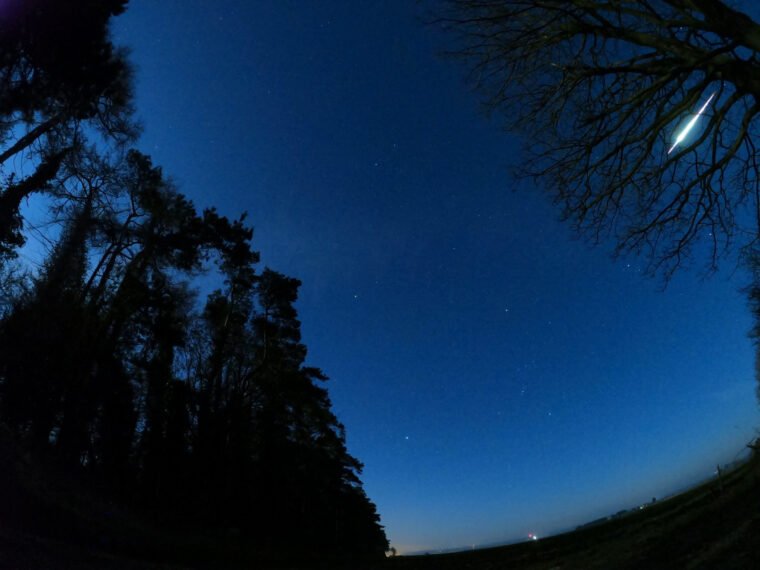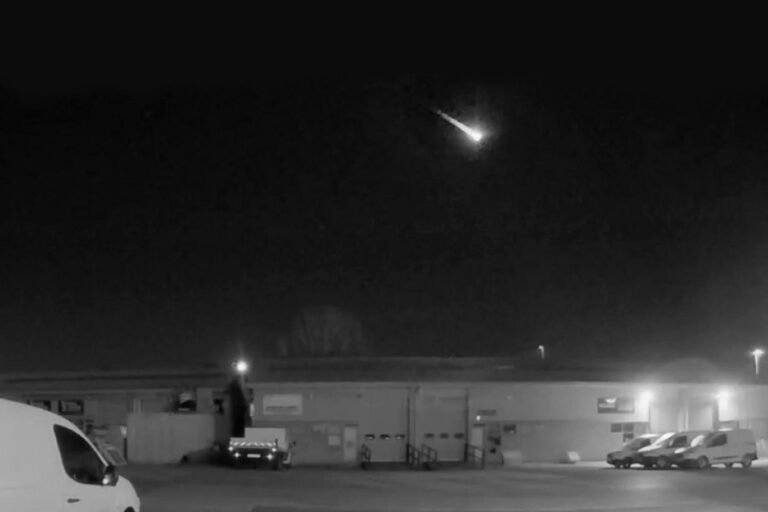In late February, the night skies over the United Kingdom were brighter than usual as a fireball coursed through the air over Northern Europe. The luminous display–one of the brightest of its kind seen over the UK in recent memory–was captured on cameras throughout the country.
Although the appearance of fireballs—even bright ones like the one seen on February 28—is a common occurrence for stargazers, what is not common on British soil is the recovery of space rocks like these.
However, in a surprising turn of events, the object that illuminated the evening air over the United Kingdom just days ago was recovered after it landed in a driveway in small medieval market town of Winchcombe, Gloucestershire. The Debrief previously reported that the object was believed to have landed just outside the market town of Stratford-upon-Avon, near Banbury Road. Experts had maintained high hopes that the object would be recovered.
According to a statement from the British Natural History Museum, “fragments of this meteorite weighing just under 300 grams have been recovered and taken to the Museum to be analysed and studied.”
“This is the first time since 1991 that a piece of space rock has landed and been recovered in the UK,” the Museum confirmed, “and marks an incredibly rare and exciting moment.”


According to museum expert Sara Russell, the recovery of the space rock is significant for more than the rare occurrence of meteorite landings on British soil. The object’s composition has been identified as a carbonaceous chondrite. Of the three varieties of meteorites, these silicate-rich specimens are one of the two varieties of stony meteorites, which are significant for a variety of reasons.
Astronomers have long relied on carbonaceous chondrites, which represent only around three percent of all meteorites that fall to Earth, on account of what they are able to reveal about the history of our solar system. These rare meteorites are themselves subcategorized into six different groups to account for the differing chemistry of each variety.
So how rare is the meteorite recently recovered near Winchcombe?
“There are about 65,000 known meteorites in the entire world,” Russell said, “and of those only 51 of them are carbonaceous chondrites that have been seen to fall like this one.”
On account of its rarity, as well as its unique chemical composition, the “Winchcombe meteorite” as it is now being called may even contain the building blocks of life.
According to Russell, the meteorite’s composition is almost identical to what scientists expect to be recovered from current asteroid retrieval missions that include Japan’s Hayabusa2 mission, as well as NASA’s OSIRIS-REx mission.
Russell says the Winchcombe meterorite “looks exactly like the material they are collecting.”Astronomers have long speculated about the unique role such meteorites might have played in the development of our planet. It is possible that these mineral-rich space rocks might have brought water to our planet in its early stages of development, and possibly even the building blocks of life as we know it.
“I am just speechless with excitement,” Russell admits.
The object was captured on several door-cams and security cameras as it fell toward Earth on February 28.
@UKMeteorNetwork doorbell cam Milton Keynes pic.twitter.com/TQ8lCcYqdO
— Ivor Lafford (@Lafford_MK) February 28, 2021
Compared with other countries, the smaller surface area of the British Isles is one of the factors that makes its space rock landings such an uncommon occurrence. According to the Earth Impact Database (EID), a total of just 41 known impact craters exist in all of Europe, with two unconfirmed impact locations existing near Loch Broom, Scotland, as well as a suspected impact crater located within the North Sea near England.
It is believed that the slow speed the Winchcombe meteorite was moving during atmospheric entry—estimated to have been around 8-miles-per-second—could be one reason the fragment made its way all the way to British soil.
So you’re a Pinterest user huh? Great news! You can now follow The Debrief on Pinterest for exclusive infographics along with the latest news on breakthrough science and disruptive tech!


